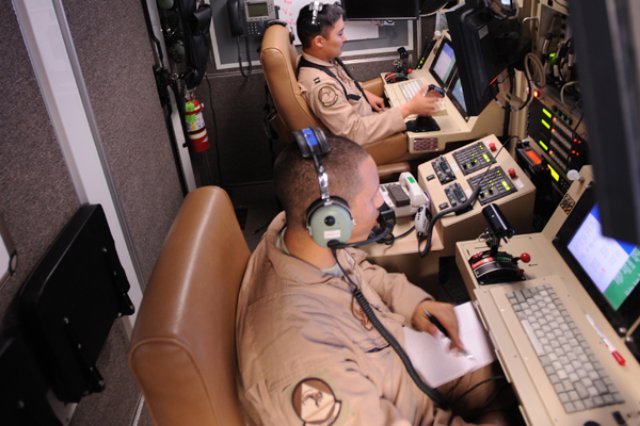The U.S. Air Force has delayed until possibly next year a decision on whether to let enlisted airmen fly RPAS. A decision on the matter was expected in November, but will probably be pushed back until January, officials said last week at the Air and Space Conference near Washington, D.C. No explanation was immediately available.
“We’ll be making a decision,” Chief Master Sgt. of the Air Force James Cody told some 200 mostly enlisted airmen last Wednesday at the conference organized by the Air Force Association.
“It’s not a decision about if we think enlisted airmen can fly RPAs,” he added, referring to remotely piloted aircraft. “It’s a decision about the right thing for our organization, for our Air Force.”
His comments came a day after Air Force Secretary Deborah Lee James and Chief of Staff Gen. Mark Welsh said they thought enlisted personnel could do the job.
“With the right training and the right preparation, I just can’t imagine that they couldn’t do an excellent job of being an RPA pilot,” James said, according to an article by the Air Force Times.
Welsh reportedly said, “I have no doubt they can do the job. The question is, should we go that way?”
The Air Force, which flies such unmanned systems as the MQ-1 Predator and MQ-9 Reaper made by General Atomics, is struggling to meet surging demand for drone operators both in the U.S. and abroad, as more and more pilots and trainers leave the service due to stress.
Indeed, enough RPA operators have left that Air Force officials cut the number of combat air patrols by armed surveillance drones to 60 a day by October, down from a peak of 65 a day.
The service has about 1,000 active-duty pilots for Predators and Reapers, though at least 200 more are needed to meet requirements for current missions. The service trains about 180 such pilots a year, but loses about 240 due to attrition. General Atomics has even opened a drone training academy to help alleviate the bottleneck.
Drone pilots typically fly between 900 and 1,100 hours a year, while fighter pilots generally fly about a quarter as much. Exacerbating the problem is a cultural divide within the service related to the ongoing stigmatization of unmanned aircraft operators, who are still judged by some of their peers as not being “real” pilots.
During a question-and-answer session with airmen, Cody pushed back against reports that senior chiefs disagreed over whether enlisted airmen should be flying drones. In the Air Force — unlike the other services — the mission of piloting RPAs has been reserved for officers since the technology was adopted.
Cody said comments made the day before by top NCOs for Air Force Special Operations and Air Mobility commands were taken out of context and misunderstood. While AMC Chief Master Sgt. Victoria Gamble said the Air Force needs enlisted pilots now, AFSOC’s Chief Master Sgt. Matthew Caruso said he did not believe the service was ready.
“They weren’t in disagreement with each other,” Cody said. “He wasn’t saying we shouldn’t do it. He was saying we’re not doing it right now — meaning we’re not ready today to do it. We’re absolutely looking at it right now and considering it.”
Cody said the debate is not about whether enlisted airmen can pilot remotely controlled aircraft; it’s about whether the change would fit into the organizational structure and benefit the service.
Source: Military.com

